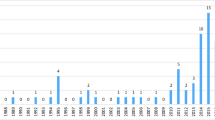Abstract
On October 3, 1988, at 7:45 a.m. a flash flood occurred in the region of Nimes, France. Though the homes of 45,000 people were damaged and more than 1,100 vehicles were destroyed, only 3 severe injuries and 9 deaths were reported. A community survey was conducted to study (1) what factors might have contributed to the limited number of deaths, (2) the reactions of the population to the disaster, and (3) the health effects associated with the impact and postimpact phases of the disaster. Overall, 108 questionnaires were completed from a systematic sample of 187 households living in ground-level dwellings in two of the most seriously affected areas of the city. Only 17% of all interviewees knew that they lived in an area subject to flood. When they realized they were in danger, 93% of all persons were in their houses or other buildings, 4% were in the streets, and 3% were in cars. Fifty-six percent of the interviewees tried to get to safety. Thirty percent of the interviewees reported that they were rescued; 20% of these persons reported being saved from a direct life threat.
Neighbors (40%), family members (20%), firefighters (12%), the Red Cross (10%), and military personnel (8%) conducted rescue operations. Six percent of all members of interviewed households were reportedly suffering mild injuries that, in 70% of these cases, had been sustained during the impact phase. Health problems and injuries during the postimpact phase may have been limited by the response of trained military personnel and by the distribution of boots and gloves to other responders. The limited death toll might be attributed to: (1) the disaster occurred early in the morning when people were still home (2) traffic heading into the city was stopped by flood water on some access roads, (3) the rescue operations were set up within the framework of the French disaster plan, and (4) the civilian response. No outbreaks of infectious disease were detected after the disaster.
Similar content being viewed by others
References
DeanJ.A., DeanA. G., BurtonA. and DickerR. (1988): Epi Info, Version 3. Atlanta, G.A.: US Department of Health and Human Services, Public Health Service.
FrazierK. (1979): The violent face of nature: severe phenomena and natural disasters. - Flood. New Work: William Morrow and Company, Inc.
French J. (1989): The Public Health Consequences of Disasters, Public Health Service.
PerryJ.A. (1979): Pesticide and PCB residues in the upper Snake River ecosystem So. East Idaho following the collapse of the Teton dam, 1976. - Arch. Environ. Contam. Toxicol. 8: 139–159.
Author information
Authors and Affiliations
Additional information
Corresponding author.
Rights and permissions
About this article
Cite this article
Duclos, P., Vidonne, O., Beuf, P. et al. Flash flood disaster-nîmes, France, 1988. Eur J Epidemiol 7, 365–371 (1991). https://doi.org/10.1007/BF00145001
Issue Date:
DOI: https://doi.org/10.1007/BF00145001




